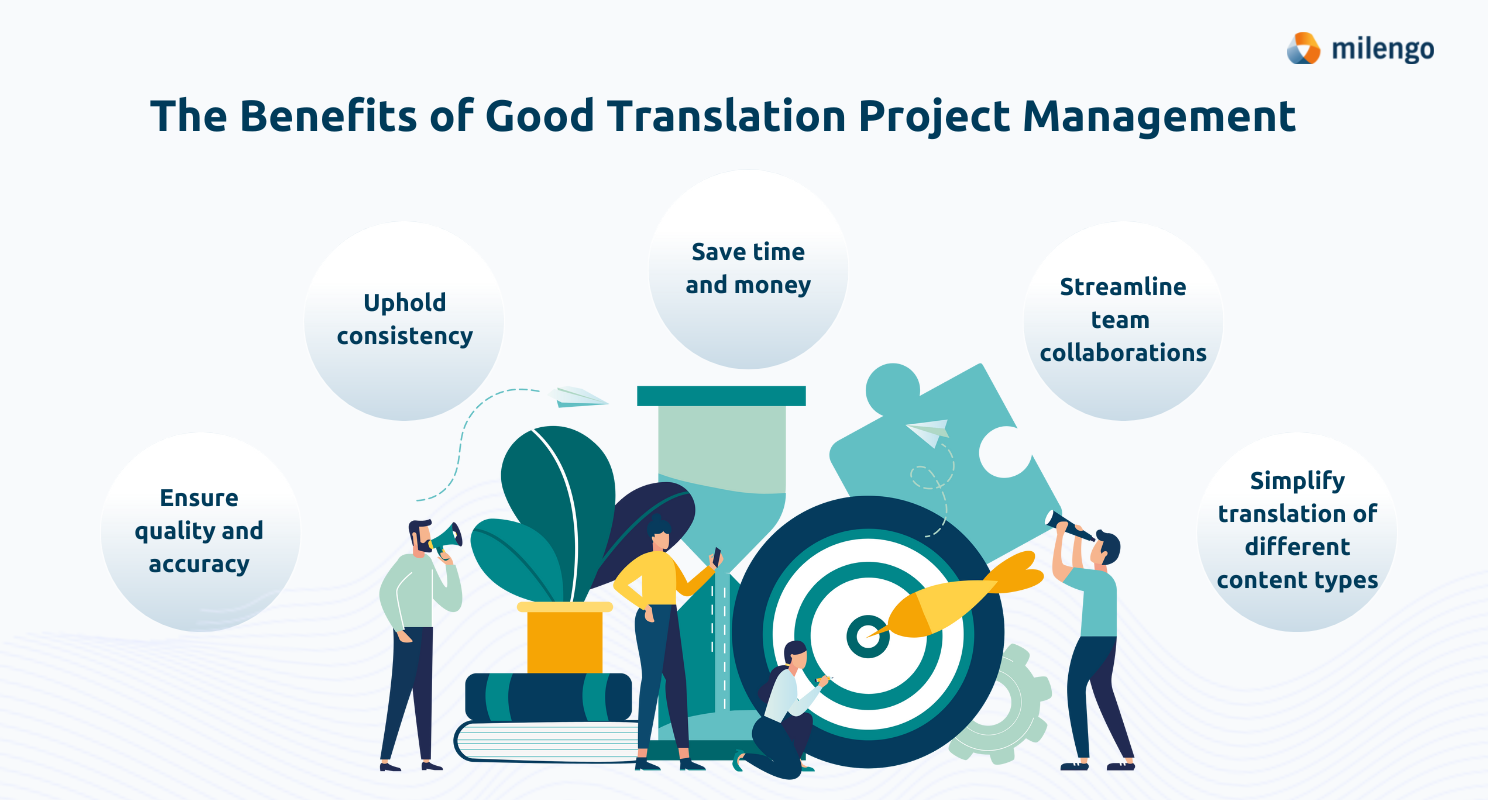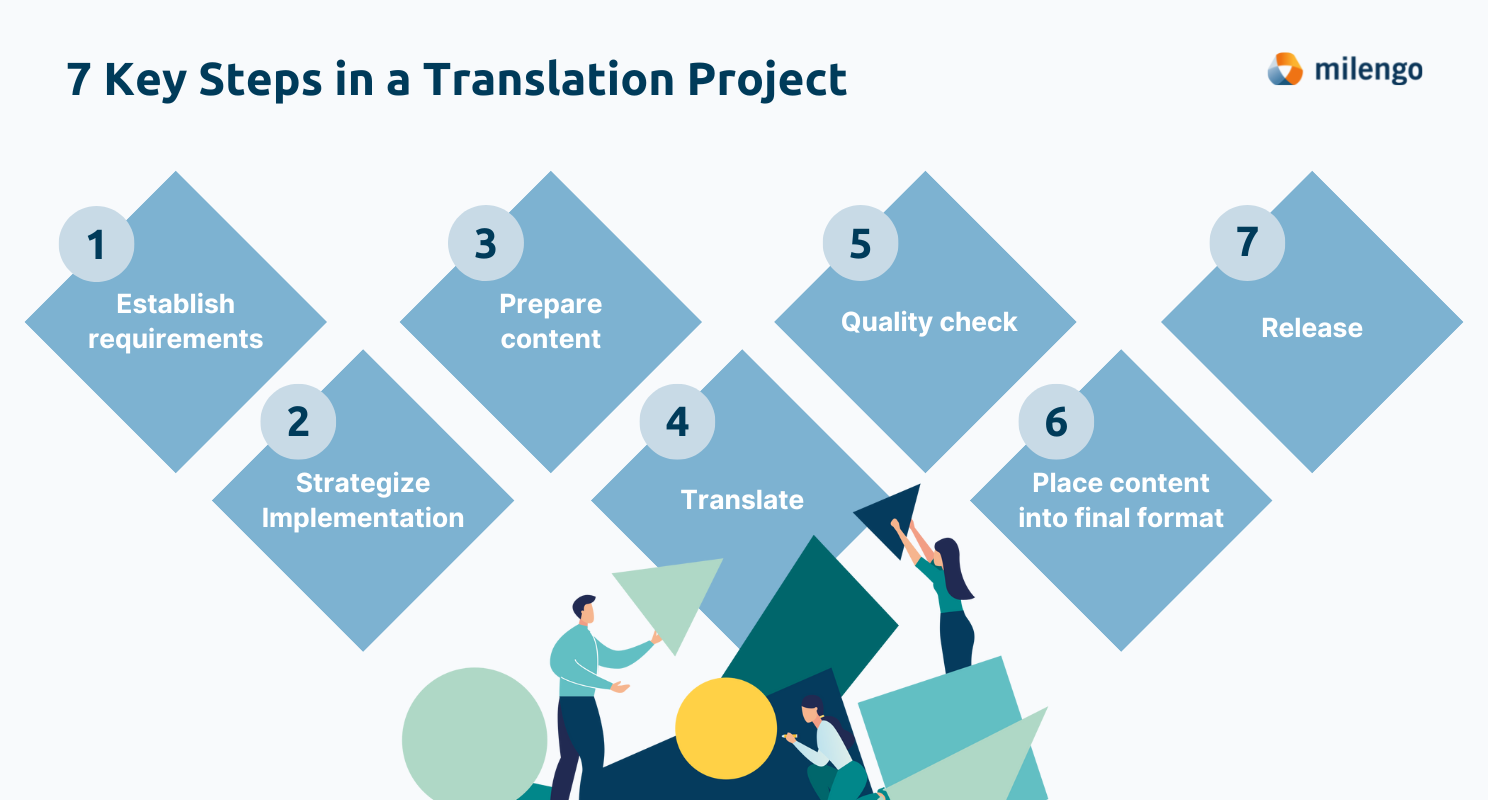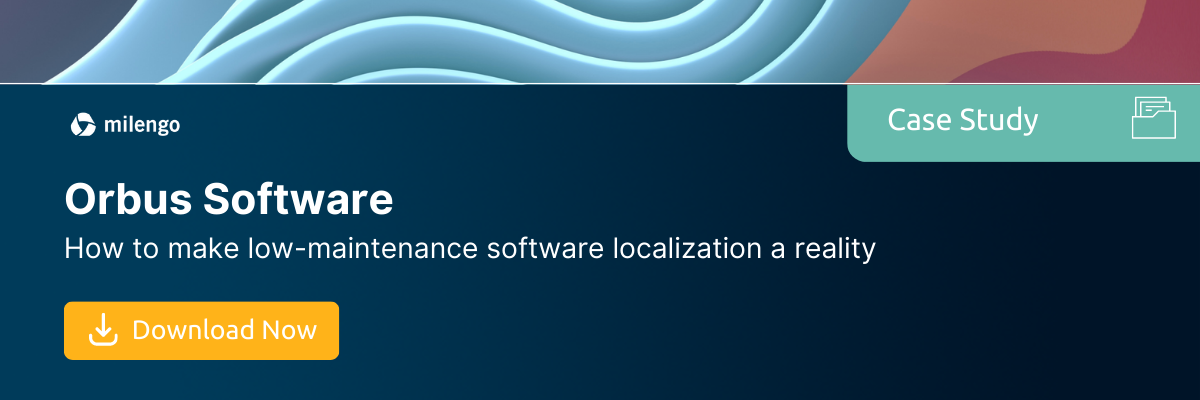Translation Project Management 101

All projects need to be managed if you want them to be effective and profitable. This is especially true for translation projects, which can quickly get overwhelming when volumes start ballooning.
Translation project management refers to a system of processes put in place to align internal and external teams involved with translation. These processes include assets and tools such as translation memory, machine translation and of course, your trusty translators.
Whether you’re translating a website, app, marketing materials or product documentation, good translation management is necessary to ensure that translations are delivered on time, are of high quality, and with optimized costs.
This blog will detail the benefits of good project management in translation, outline the necessary steps in a translation project, as well as share solutions available.
The Benefits of Good Project Management in Translation

- Ensure translation quality and accuracy: Accurate translations that read well reduce misunderstanding. This is especially important when dealing with technical or legal content, where one tiny error could result in major consequences. Proper translation management can achieve this by ensuring your company works with native expert translators.
- Uphold consistency: Consistency is a cornerstone in building customer trust and a strong brand voice. Good translation project management will ensure that your content is translated consistently across all platforms and languages. This can involve the development of assets such as translation memories and term-bases.
- Save time and money: Having a translation management strategy in place will aid with streamlining efforts, reducing time and cost. For businesses that have documents requiring constant updates, translation management tools can save significant amounts of time by automatically identifying changes so translators can focus their efforts.
- Streamlines collaboration between teams: Translation often involves internal and external teams working concurrently on their parts. A tenet of good project management in translation is to centralize information such that all team members work from the same source of truth. Doing so also ensures everyone is on the same page and allows seamless communication for project updates and statuses.
- Simplifies translating different content types: Having an overview of the file types you are working with and access to translation tools with API integrations will simplify the effort required to extract text for translations and re-integrate content back into its final format!
7 Key Steps in a Translation Project

- Establish clear plans and requirements. This includes answering questions such as: What content needs to be translated? What language pairs does the content need to be translated into? What format do I need my final delivery to be in? When does the translation need to be completed?
- Strategic Consulting. Identifying the right set of processes and translation tool stack, and building a team of expert linguists based on requirements. If there is an existing stack in place then optimizing efficiency would be the main goal in this step. If there is none, then the step would involve identifying the right tools.
- Prepare content. Different types of content require different types of prep. For example, videos need to be transcribed for subtitle translation or dubbing, and software code localized for translation.
- Translate! After all the prep work, it’s finally time to hand over the content for translation.
- Quality control. Quality assurance checks to make sure translations are the best quality possible. This includes checking that terminology was correctly used, formatting tags in the right place and that there are no double spaces or other issues.
- Place content into final format. Different languages will appear different visually when written and spoken. For example, a sentence in Chinese or Japanese would appear shorter compared to the same sentence in German. Different file formats also require different software and expertise to work with. Therefore, creative elements such as brochure layouts and website UI must be considered when placing translated content back into its final file format.
- Release
How to Manage a Translation Project
There are multiple ways companies may opt to manage their translation projects depending on their translation needs. Here are some of the most popular ways to manage translation projects:
- In-house Manually – Often when starting translation projects, many companies start with spreadsheets. This method entails splitting up text into strings in spreadsheets and sharing them with translators. It works well enough for smaller projects however, once the number of languages and assets to translate starts to increase, this method can quickly become overwhelming and result in human errors. This is when a translation management system should be considered. Project management is done by an in-house champion
- In-house Automated – Teams can subscribe to a translation management system (TMS), such as Lokalise, to assist with project management. When purchasing a TMS, it’s important to consider where your company is in its translation journey and the objectives you wish to fulfil with the software. Common objectives include:
- Translation Setup: Companies that are scaling up rapidly and need content translated to support expansion
- Scaling Translations: Companies that have started translations, but need assistance to set up workflows that are scalable
- Optimizing Translations: Companies that have existing solutions in place, but may not be benefiting from translation technologies and best practices.
- Outsourced – Language Service Providers (LSP) will not just help you with sourcing the right translators for your project. Some LSPs, such as Milengo, also provide support from experienced project managers to manage your translation projects.
- Hybrid – Some companies opt to work with both translation management systems and LSPs in order to free up their team’s time for more strategic tasks.
Case Study
Orbus Software are a global enterprise software vendor and a leading provider of cloud solutions for digital transformation. In 2021 they saw a record 700% growth in its platform subscription. This came with a need to localize their offerings to support their rapid international expansion in a way that respected cultural communities.
There are significant advantages to having localized languages in enterprise markets, so for us, translation remains a priority as we enter different regions. – Jonathan Dean, Product Director, Orbus
The Challenge
Orbus needed a solution to deal with an ever-increasing volume of translations that accompanied global expansion. They had already been working with an external translation vendor, but the results were disappointing. With limited internal capacities for localization, the company was looking for a solution that could:
- Provide reliable translation quality
- Deliver fast roll-outs
- Scale on demand
- Automate & modernize technology offerings
The Solution
Orbus opted for a Hybrid approach, subscribing to Lokalise for a cloud-based localization and translation management system and appointing Milengo as their Language Service Provider. This partnership enabled Orbus to release localized products faster and more efficiently.
The Results
Orbus Software achieved low-maintenance localization that delivered value and cost-savings at every stage of the process with the following:
- A formalized localization workflow in one centralized workspace. Previously they were going the manual spreadsheet route, which sometimes led to translations getting lost as too many files were being sent back and forth
- Tech tools and automations allowed teams to save time by omitting the repetitive manual tasks required to manage translations across platforms and languages.
- Native translators who abided by ISO-quality standards significantly increased translation quality
Our reviewers had to make almost no changes to the translated texts. The content was instantly usable. – Vladyslav Remnov, Technical Writer, Orbus
Get the full details here.

Summary
Once your company experiences increased translation volumes, it is important to begin developing a good translation management strategy. This will help your team streamline collaboration, simplify the translation of different content formats, save time and costs, ensure quality and accuracy, and uphold consistency in all your translation work.
Companies can choose to manage translations in-house or outsource them. Those that outsource to translation agencies can usually opt for project management to be included in the scope of services provided.
Book a Consultation Call
Milengo is an ISO-17100 certified language service provider with over 30 years of experience. With a strong emphasis on consultation, we develop personalized translation and localization strategies to effectively manage translation projects for our customers. Book a call and let’s talk about how we can develop your company’s personalized translation strategy!

